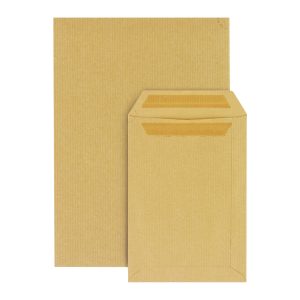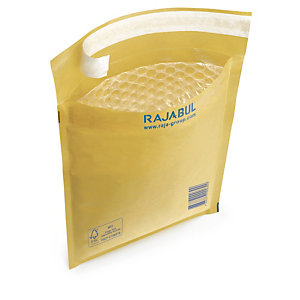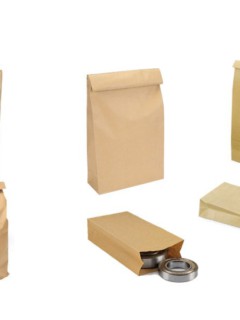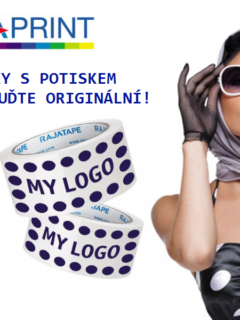I’m sure you’ve had the experience of having all your documents ready but not knowing what envelope to pack them in. “Will it be big enough and durable enough to safely deliver the contents?” Choosing the right envelope is all about practicality, only then should you focus on appearance. Learn what envelopes exist and what they are used for.
The envelope is just a small detail, you might say. But the wrong choice can have an impact on shipping. The right choice can improve the flow of correspondence and ensure smooth delivery of documents. And when you choose the right envelope formats, you save time and money. So let’s skip straight to the most commonly used ones.
Standard C envelope sizes
- DL envelopes (110 x 220 mm): used for 2x folded A4 documents (contracts, amendments, annual reports).
- C7/6 envelopes (81 x 162 mm): compact and practical. Reach for them when you need to send smaller forms (flyers, invitations). Their size is based on the A5 format (documents are usually folded into thirds).
- C6 envelopes (114 x 162 mm): a popular middle ground. They are not large, but are spacious enough for A5 documents folded in half. They will serve you for sending ordinary letters or correspondence with customers.
- Envelopes type C6/5 (114 x 229 mm): their oblong shape corresponds to A4 folded in thirds. You can use them for sending quotations, presentations or other larger materials.
- Type C5 envelopes (162 x 229 mm): a classic that never gets old and is stocked by many companies because it can hold A4 documents folded in half.
- Type C4 envelopes (229 x 324 mm): the queen of the large format, making them suitable for sending A4 documents unfolded. Use it for important contracts or offers that deserve proper space and must not be devalued.

Type B envelopes
In addition to the standard Type C envelopes, you may also see Type B envelopes. They are larger in size and are used for sending bulkier materials or multiple documents. These formats are commonly used in offices, printers or copy centres:
- B3 (353 x 500 mm) is used for the B6 format.
- B4 (250 x 353 mm) can be used for a staggered A4 stack.
- B5 (176 x 250 mm) corresponds to A5 format (unfolded reports, offers, leaflets, sheets).
- B6 (125 x 176 mm) can hold a stack of A6 brochures, leaflets or folded guides.
✉️ The rigid material of these envelopes helps protect the contents from unwanted movement and deformation during transit.
What are bubble envelopes used for?
Jewellery, costume jewellery, works of art and collectibles need special protection as there are many dangers lurking in transit. If you are transporting these items, be sure to stock up on bubble wrap.
The air-filled cushions are excellent at absorbing shock and movement, greatly reducing the likelihood of the parcel arriving to the customer damaged.
Bubble envelopes are also available in several sizes and for different purposes:
|
Type of bubble envelope |
Dimensions |
Uses |
|
CD |
175 x 165 mm |
CD/DVD |
|
L/21 |
400 x 460 mm |
clothing, textiles, postal boxes |
|
K/20 |
350 x 470 mm | large garments, calendars |
| I/19 | 295 x 445 mm |
large toys, large books |
|
H/18 |
265 x 360 mm | books, toys, fashion accessories |
|
G/17 |
225 x 340 mm | A4 calendars, catalogues |
|
F/16 |
215 x 340 mm |
photo albums |
| E/15 | 215 x 265 mm |
larger jewellery, smaller electronics |
| D/14 | 175 x 265 mm |
Tablets, small books, readers in A5 size |
|
C/13 |
145 x 215 mm | small haberdashery, mobile phone accessories |
|
B/12 |
115 x 215 mm |
smaller cosmetic products |
| A/11 | 95 x 165 mm |
jewellery, parts, small fragile items |

✉️ Handy tip: Sometimes less really is more. When wrapping a parcel, choose an envelope just slightly larger than needed for the item/document. An envelope that is too large can look unaesthetically pleasing and the customer may be unpleasantly surprised that you are wasting a large envelope on a smaller item. You may even unknowingly increase your shipping costs. That’s why you shouldn’t underestimate choosing the right size. Choose your envelopes from our e-shop.














